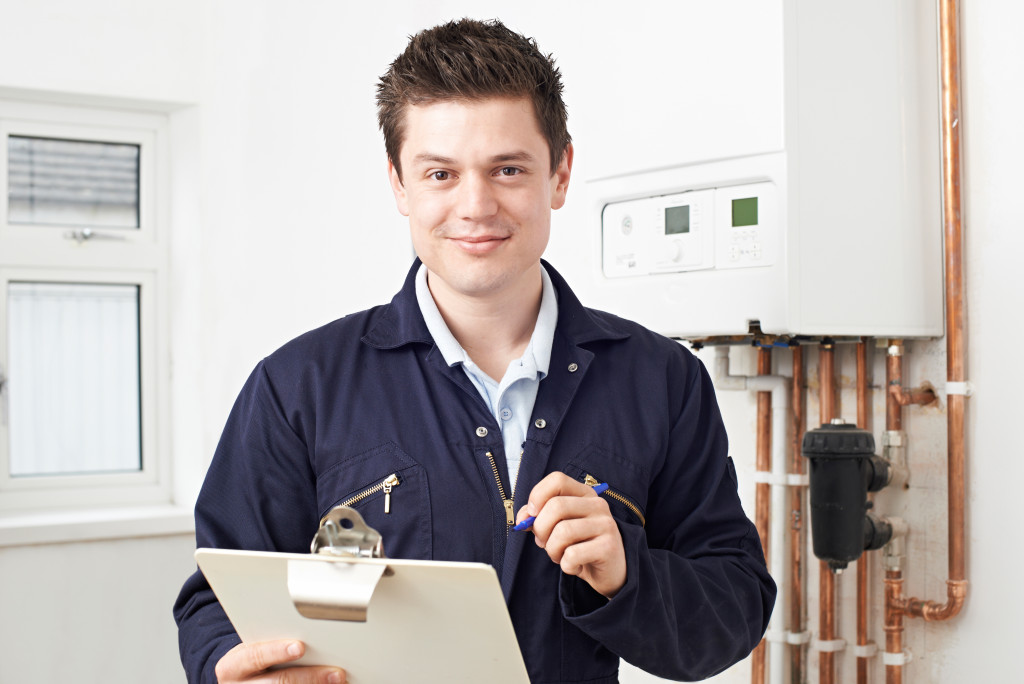- A rental property annual inspection is a thorough review conducted by the landlord or a property management company.
- The landlord or property management company must notify tenants of the inspections, typically 24-48 hours in advance.
- Essential items to include in your annual rental inspection checklist are HVAC systems, pipelines, plumbing, carbon monoxide/smoke detectors, roof, and structural inspections.
- Regular inspections can save landlords money, protect their investments, and keep tenants safe and satisfied.
As a landlord, protecting your investment is a top priority, and one way to do this is by conducting annual inspections of your rental property. While it may seem like a hassle and an added expense, a yearly review can save you from significant damages, ensure your property is up to code, and keep your tenants safe and happy.
It’s more important now than ever to ensure your rental property is in good condition and well-maintained. Here are the essential items to include in your annual rental inspection checklist.
What is a Rental Property Annual Inspection?
A rental property annual inspection is a thorough review of the rental property conducted by the landlord or a property management company. It typically occurs once a year and aims to ensure the property is in good condition, well-maintained, and free from safety hazards.
During the inspection, the inspector will check for faulty electrical wiring, water damage, mold growth, leaky plumbing, and broken appliances. Additionally, they will examine the exterior of the building, including the landscaping, parking areas, and common areas like hallways and staircases.
How Does a Rental Property Annual Inspection Work?

When it comes to the rental property annual inspection, there are a few things that both tenants and landlords need to be aware of. First, the landlord or property management company is required to give the tenant notice of the inspection. This notice can vary based on the location or state laws, but typically it’s around 24-48 hours in advance.
During the inspection, the landlord or inspector will typically go room by room, photographing everything they observe and making notes of any areas of concern. After the review, the landlord or inspector will provide a detailed report to the tenant outlining any identified repairs or maintenance requirements.
Things to Inspect
Now that you know what goes into an annual rental property inspection, here is a checklist of items to inspect:
HVAC Systems Inspection
The first item on your checklist should be your HVAC (Heating, Ventilation, and Air Conditioning) system. Renters expect their rental property to have a functioning HVAC system, especially during extreme weather conditions.
During the inspection, ensure the system is running efficiently, filters are replaced, and, if needed, hire a professional to perform routine maintenance. Keep records of each inspection date and repairs made to avoid future unexpected expenses.
Inspect the Pipeline
Your home’s pipeline is the main line of infrastructure that carries water and waste from your property to the public sewer system. To keep it running smoothly, you should inspect it annually using a specialized pipeline survey and inspection tool.
You can rent this tool from a local pipeline services shop or hire a professional to inspect it. This will help ensure your tenants are not experiencing any plumbing issues due to clogged pipes or faulty connections.
Check the Plumbing
Plumbing is another essential item to include in your annual rental inspection checklist. It’s necessary to check all pipes, faucets, sinks, and toilets for leaks or damage. Don’t forget to check the water heater and ensure the temperature is set under 120°F to prevent scalding and save energy usage. If any issues arise, fixing them quickly is crucial to avoid unwanted water damage.
Carbon Monoxide and Smoke Detector Inspection
Protecting your tenant’s safety is a top priority. During your annual inspection, check the carbon monoxide and smoke detectors to ensure they function correctly and are up to code. If they require maintenance, replace the batteries or the entire unit.
Roof Inspection

The roof protects the entire property and keeps tenants safe and dry. A damaged roof may lead to leaks, water damage, and unsafe living conditions. It’s crucial to have the roof inspected during your annual checkup. Look for signs of wear and tear, such as cracked or missing shingles, water leaks, and cracks. If any issues arise, don’t hesitate to get a professional inspection.
Structural Inspection
The structural integrity of your rental property is essential and should not be overlooked during your annual inspection. Structural issues can cause unsafe living conditions, high repair costs, and decrease the property’s value. Have a professional investigate cracks, foundation issues, and other structural anomalies.
Final Thoughts
An annual inspection of your rental property is crucial to protecting your investment, your tenants, and the property’s value. The checklist of items outlined here is a good starting point for your rental inspections. Regular inspections can save money, protect your investment, and keep your tenants safe and satisfied. Remember to keep careful records of each review you conduct, and always seek professional help when needed.

